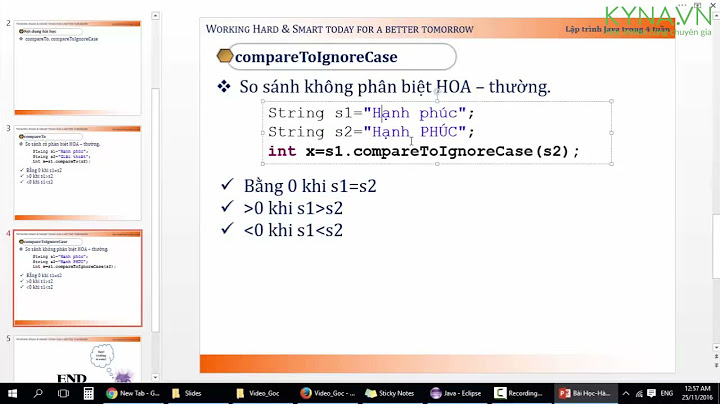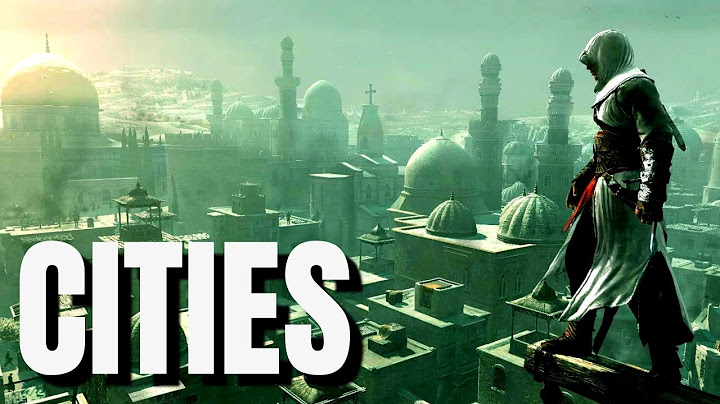The Battle of Iwo Jima was one of the bloodiest campaigns of World War II on the Pacific front. Japanese on this small rocky island were able to warn the mainland about incoming bombing raids by the Allies. On February 19, 1945, the Americans invaded, knowing that they faced more than 22,000 Japanese troops in well-fortified bunkers and caves. The 30,000 American soldiers took heavy fire as they landed on the beach; 40,000 would follow them during the month-long campaign. In the overall operation, 6,821 Americans lost their lives and 20,000 were wounded. Twenty-seven Medals of Honor were awarded for conduct in the invasion of Iwo Jima — the largest number in history for any single battle, and more than one-quarter of all those awarded during World War II. Show
This is the background for the events depicted in Flags of Our Fathers, an engrossing World War II film directed by Clint Eastwood based on the book by James Bradley with Ron Powers. The screenplay by William Broyles Jr. and Paul Haggis presents a multidimensional and thought-provoking examination of heroism, the political uses of photographs and soldiers, and the engines of money and power that fuel the American way of life. The drama shifts into different time zones in its look at the famous photograph by Joe Rosenthal taken on February 23, 1945 when five Marines and one Navy Corpsman raised the U.S. flag on Mount Suribachi on Iwo Jima. Some media savvy and shrewd politicians in Washington, D.C., are quick to sense the amazing emotional reaction of the American public to the photograph. By this time, the American public was tired of war, and the defense department was almost broke. The right picture, they realized, could turn this all around. The six Americans who hoisted the flat on Iwo Jima became overnight heroes, even though no faces were identifiable in the photograph. Three of the soldiers were killed shortly afterwards. The other three are brought back home for a welcome that exceeds their wildest dreams. They are John "Doc" Bradley (Ryan Phillippe), the only Navy man in the group of Marines; Rene Gagnon (Jesse Bradford), a gregarious young man who had been the runner bringing the flag to the top of the mountain; and Ira Hayes (Adam Beach), a Native American who is the most reluctant among the three to being heralded as a hero. He views his comrades who died in Iwo Jima as the real heroes. These three men are designated as advertising props in an all-out effort by the Treasury Department to raise $14 million dollars through the sale of War Bonds. They meet Congressmen in Washington and briefly shake hands with President Truman. Gagnon's fiancée arrives and joins the tour, while Hayes attempts to drown his war nightnares in booze. Bradley, the most quiet-spoken of the three, tries to hold things together as the trip to New York City and then an appearance in Soldier's Field become increasingly garish and absurd. At one dnner, they are served an ice cream model of them raising the Flag with strawberry sauce dripping over their bodies like blood. Director Clint Eastwood almost matches the adrenaline-pumping D-Day invasion in Steven Spielberg's Saving Private Ryan with his bloody depiction of the American invasion of Iwo Jima. He draws out two memorable performances from Ryan Phillippe as the Doc, and Barry Pepper as the gutsy sergeant who demonstrates true leadership ability on the field of combat. But the heart and soul of the story is housed in the intense and affecting performance of Adam Beach as Ira Hayes. This Native American actor, who was in Smoke Signals and Windtalkers, conveys this soldier's conflicted feelings about the War Bonds tour. It doesn't help that everywhere he goes he is called "Chief." On one stop, he is denied access to a bar because the owners refuse to serve Indians. The fate of Hayes after the war ended is quite sad as is the story of what happened to the enthusiastic Gagnon, who was convinced that he would reap the harvest of his celebrity status after the war with a great job. The movie's meditation on heroism comes at us from many directions, and it all comes down to this: soldiers die in battle not for their country but for their friends. The mechanics and the barbarity of war leave little room for the ancient ideals of honor and nobility in combat. Men doing their duty in the pitch of danger and death may indeed qualify as heroism, but their accomplishments are still diminished when they are exploited by politicians and media to sell war and exaggerated stories about battle. Veterans have enough to deal with besides the expectation that they will collude in tales of victory and lies about how well things are going. Eastwood's Flags of Our Fathers coveys all of this and more in a movie that delivers the goods dramatically and compels us all to rethink our ideas about heroism in war. Flags of Our Fathers is a 2006 American war drama film directed, co-produced, and scored by Clint Eastwood and written by William Broyles Jr. and Paul Haggis. It is based on the 2000 book of the same name written by James Bradley and Ron Powers about the 1945 Battle of Iwo Jima, the five Marines and one Navy corpsman who were involved in raising the flag on Iwo Jima, and the after effects of that event on their lives. The film is taken from the American viewpoint of the Battle of Iwo Jima, while its companion film, Letters from Iwo Jima, which Eastwood also directed, is from the Japanese viewpoint of the battle. Although it was a box office failure, only grossing $65.9 million against a $90 million budget, the film received favorable reviews from critics. The companion film Letters from Iwo Jima was released in Japan on December 9, 2006, and in the United States on December 20, 2006, two months after the release of Flags of Our Fathers on October 20, 2006. Until June 23, 2016, the author Bradley's father John Bradley, Navy corpsman, was misidentified as being one of the figures who raised the second flag, and incorrectly depicted on the bronze statue memorial, as one of the five flag-raisers of the 32-foot (9.8 m) monument. Also, until October 16, 2019, Rene Gagnon was also misidentified. Plot[edit]As three US servicemen – Marine Private First Class Ira Hayes, Private First Class Rene Gagnon, and Navy Pharmacist's Mate 2nd Class John "Doc" Bradley – are feted as heroes in a war bond drive, they reflect on their experiences via flashback. After training at Camp Tarawa in Hawaii, the 28th Marine Regiment 5th Marine Division sails to invade Iwo Jima. The Navy bombards suspected Japanese positions for three days. Sergeant Mike Strank is put in charge of Second Platoon. The next day, February 19, 1945, the Marines land on Iwo Jima using Higgins boats and LVTs. The beaches are silent and Private First Class Ralph "Iggy" Ignatowski wonders if the defenders are all dead before Japanese heavy artillery and machine guns open fire on the advancing Marines and the Navy ships. Casualties are heavy, but the beaches are secured. Two days later, the Marines attack Mount Suribachi under a rain of Japanese artillery and machine gun fire, as the Navy bombards the mountain. Doc saves the lives of several Marines under fire, which later earns him the Navy Cross. The mountain is eventually secured. On February 23, the platoon under command of Sergeant Hank Hansen reaches the top of Mount Suribachi and hoists the United States flag to cheers from the beaches and the ships. Secretary of the Navy James Forrestal, who witnesses the flag raising as he lands on the beach, requests the flag for himself. Colonel Chandler Johnson decides his 2nd Battalion deserves the flag more. Rene is sent up with Second Platoon to replace the first flag with a second one for Forrestal to take. Mike, Doc, Ira, Rene, and two other Marines (Corporal Harlon Block and Private First Class Franklin Sousley) are photographed by Joe Rosenthal as they raise the second flag. On March 1, the Second Platoon is ambushed from a Japanese machine gun nest. During the fight over the nest, Mike is hit by a U.S. Navy shell and dies from his wounds. Later that day, Hank is shot in the chest and dies, and Harlon is killed by machine gun fire. Two nights later, while Doc is helping a wounded Marine, Iggy is abducted by Japanese troops and dragged into a tunnel. Doc finds his viciously mangled body a few days later. On March 21, Franklin is killed by machine gun fire and dies in Ira's arms. Of the eight men in the squad, only three are left: Doc, Ira, and Rene. A few days after Franklin's death, Doc is wounded by artillery fire while trying to save a fellow corpsman. He survives and is sent back home. On March 26, the battle ends and the U.S. Marines are victorious. After the battle, the press gets hold of Rosenthal's photograph. It is a huge morale booster and becomes famous. Rene is asked to name the six men in the photo; he identifies himself, Mike, Doc, and Franklin, but misidentifies Harlon as Hank. Rene eventually names Ira as the sixth man, even after Ira threatens to kill him for doing so. Doc, Ira, and Rene are sent home as part of the seventh bond tour. When they arrive to a hero's welcome in Washington, DC, Doc notices that Hank's mother is on the list of mothers of the dead flag raisers. Ira angrily denounces the bond drive as a farce. The men are reprimanded by Bud Gerber of the Treasury Department, who tells them that the country cannot afford the war and if the bond drive fails, the U.S. will abandon the Pacific and their sacrifices will be for nothing. The three agree not to tell anyone that Hank was not in the photograph. As the three are sent around the country to raise money and make speeches, Ira is guilt-ridden, faces discrimination as a Native American, and descends into alcoholism. After he throws up one night in front of General Alexander Vandegrift, commandant of the Marine Corps, he is sent back to his unit and the bond drive continues without him. After the war, the three survivors return to their homes. Ira still struggles with alcoholism and is never able to escape his unwanted fame. One day after being released from jail, he hitchhikes over 1,300 miles to Texas to see Harlon Block's family. He tells Harlon's father that his son was indeed at the base of the flag in the photograph. In 1954, the USMC War Memorial is dedicated and the three flag raisers see each other one last time. In 1955, Ira is found dead and he is suspected to have died from exposure after a night of drinking. There was no autopsy. That same year, Doc drives to the town where Iggy's mother lives to tell her how Iggy died, though it is implied that he does not tell her the truth. Rene attempts a business career, but finds that the opportunities and offers he received during the bond drive are rescinded. After failing to find work as a police officer, he spends the rest of his life as a janitor. Doc, by contrast, is successful, buying a funeral home. In 1994, on his deathbed, he tells his story to his son, James, and in a final flashback to 1945, the men swim in the ocean after raising the flags. Cast[edit]
Production[edit]The film rights to the book were purchased by DreamWorks in June 2000. Producer Steven Spielberg brought William Broyles to write the first drafts of the script, before director Clint Eastwood brought Paul Haggis to rewrite. In the process of reading about the Japanese perspective of the war, in particular General Tadamichi Kuribayashi, Eastwood decided to film a companion piece with Letters from Iwo Jima, which was shot entirely in Japanese. Bradley Cooper auditioned for one of the leading roles. Flags of Our Fathers was shot in the course of 58 days. Jared Leto was originally cast as Rene Gagnon but had to back out due to a tour commitment with his band, Thirty Seconds to Mars. Flags of Our Fathers cost $55 million, although it was originally budgeted at $80 million. Variety subsequently downgraded the price tag to $55 million. Although the film is taken from the American viewpoint of the battle, it was filmed almost entirely in Iceland and Southern California, with a few scenes shot in Chicago. Shooting ended early 2006, before production for Letters from Iwo Jima began in March 2006. Release[edit]Critical reception[edit]On review aggregator Rotten Tomatoes, Flags of Our Fathers has an approval rating of 76% based on 238 reviews, with an average rating of 7.1/10. The site's consensus states: "Flags of Our Fathers is both a fascinating look at heroism, both earned and manufactured, and a well-filmed salute to the men who fought at the battle of Iwo Jima." On Metacritic, the film scored a 79 out of 100 based on 39 reviews, indicating "Generally favorable reviews". Roger Ebert gave the film four stars out of four praising the film for its depiction of war. The film made the top-10 list of the National Board of Review. Eastwood also earned a Golden Globe nomination for directing. The film was nominated for two Academy Awards — for Best Sound Mixing (John T. Reitz, David E. Campbell, Gregg Rudloff, and Walt Martin) and Sound Editing. Film critic Richard Roeper said, "Clint Eastwood's Flags of Our Fathers stands with the Oscar-winning Unforgiven and Million Dollar Baby as an American masterpiece. It is a searing and powerful work from a 76-year-old artist who remains at the top of his game... [and] Flags of Our Fathers is a patriotic film in that it honors those who fought in the Pacific, but it is also patriotic because it questions the official version of the truth, and reminds us that superheroes exist only in comic books and cartoon movies." Top ten lists[edit]Flags of Our Fathers was listed on numerous critics' top ten lists for 2006.
Box office[edit]Despite critical acclaim, the film under-performed at the box office, earning just $65,900,249 worldwide on an estimated $90 million production budget. Its companion film Letters From Iwo Jima was more profitable with a box office run of $71 million on a budget of $19 million. Spike Lee controversy[edit]At the 2008 Cannes Film Festival, director Spike Lee, who was making Miracle at St. Anna, about an all-black U.S. division fighting in Italy during World War II, criticized director Clint Eastwood for not depicting black Marines in Flags of Our Fathers. Citing historical accuracy, Eastwood responded that his film was specifically about the Marines who raised the flag on Mount Suribachi at Iwo Jima, pointing out that while black Marines did fight at Iwo Jima, the U.S. military was segregated during World War II, and none of the men who raised the flag were black. Eastwood believed Lee was using the comments to promote Miracle at St. Anna and angrily said that Lee should "shut his face". Lee responded that Eastwood was acting like an "angry old man", and argued that despite making two Iwo Jima films back to back, Letters from Iwo Jima and Flags of Our Fathers, "there was not one black Marine in both of those films". Contrary to Lee's claims, however, black Marines (including an all-black unit) are seen in several scenes during which the mission is outlined, as well as during the initial landings, when a wounded black Marine is carried away. During the end credits, historical photographs taken during the Battle of Iwo Jima show black Marines. Although black Marines fought in the battle, they were restricted to auxiliary roles, such as ammunition supply, and were not involved in the battle's major assaults; they did, however, take part in defensive actions. According to Alexander M. Bielakowski and Raffaele Ruggeri, "Half a million African Americans served overseas during World War II, almost all in segregated second-line units." The number of African Americans killed in action was 708. Spielberg later intervened between the two directors, after which Lee sent a copy of a film on which he was working to Eastwood for a private screening as a seeming token of apology. Home media[edit]The DVD was released in the United States by DreamWorks Home Entertainment and internationally by Warner Home Video on February 6, 2007. It is devoid of any special features. A two-disc Special Collector's Edition DVD (with special features) was released on May 22, 2007. It was also released on HD DVD and Blu-ray formats. The Two-Disc Special Collector's Edition DVD is also available in a five-disc commemorative set that also includes the two-disc Special Collector's Edition of Letters from Iwo Jima and a bonus fifth disc containing History Channel's Heroes of Iwo Jima documentary and To the Shores of Iwo Jima, a documentary produced by the United States Navy and the United States Marine Corps, released by Warner Home Video. See also[edit]
References[edit]
What is the point of Flags of Our Fathers?Flags of our Fathers, was about the story behind the raising of the US flag over Iwo Jima. I found it actually to be an anti war movie, being utterly critical over the way the US Govt exploits the famous photo for raising funds, while the actual soldiers are just exploited and get nothing in return. What was the controversy of Flags of Our Fathers?Controversy. Following a Marine investigation into the event it was determined that two of the six Marines featured in the book were not in the famous photograph. Is Flags of Our Fathers worth watching?Critic Reviews for Flags of Our Fathers Flags of Our Fathers is much the same as the classic films it proudly echoes - that war is hell, and though some are worth fighting, doing so exacts a huge human cost that cannot be glorified with the mere waving of Old Glory. How much of Flags of Our Fathers is true?Chuck Melson is chief historian of the U.S. Marine Corps. He says Eastwood's film is historically true to events, including its depiction of the war-bond drive, the spectacular scenes of ships coming to Iwo Jima, and the congestion on the beach during the invasion. |





















